Krishnendu Mukhopadhyaya
Mutual Visibility by Fat Robots with Slim Omnidirectional Camera
Jun 15, 2022
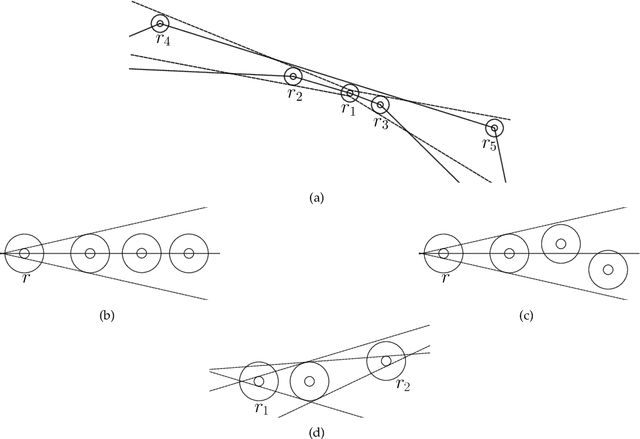
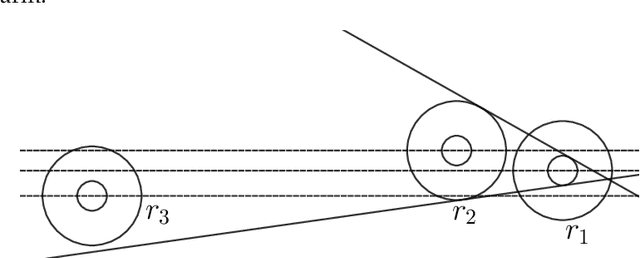

Abstract:In the existing literature of the Mutual Visibility problem for autonomous robot swarms, the adopted visibility models have some idealistic assumptions that are not consistent with practical sensing device implementations. This paper investigates the problem in the more realistic visibility model called opaque fat robots with slim omnidirectional camera. The robots are modeled as unit disks, each having an omnidirectional camera represented as a disk of smaller size. We assume that the robots have compasses that allow agreement in the direction and orientation of both axes of their local coordinate systems. The robots are equipped with visible lights which serve as a medium of communication and also as a form of memory. We present a distributed algorithm for the Mutual Visibility problem which is provably correct in the semi-synchronous setting. Our algorithm also provides a solution for Leader Election which we use as a subroutine in our main algorithm. Although Leader Election is trivial with two axis agreement in the full visibility model, it is challenging in our case and is of independent interest.
Uniform Circle Formation By Oblivious Swarm Robots
Dec 13, 2020



Abstract:In this paper, we study the circle formation problem by multiple autonomous and homogeneous disc-shaped robots (also known as fat robots). The goal of the robots is to place themselves on the periphery of a circle. Circle formation has many real-world applications, such as boundary surveillance. This paper addresses one variant of such problem { uniform circle formation, where the robots have to be equidistant apart. The robots operate by executing cycles of the states wait-look-compute-move. They are oblivious, indistinguishable, anonymous, and do not communicate via message passing. First, we solve the uniform circle formation problem while assuming the robots to be transparent. Next, we address an even weaker model, where the robots are non-transparent and have limited visibility. We propose novel distributed algorithms to solve these variants. Our presented algorithms in this paper are proved to be correct and guarantee to prevent collision and deadlock among the swarm of robots.
A Get-Together for Deaf and Dumb Robots in Three dimensional Space
Apr 02, 2016


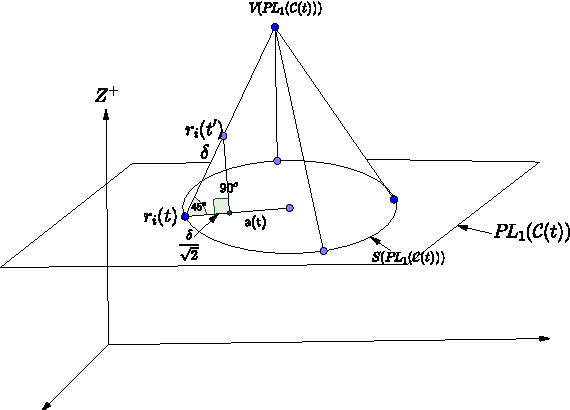
Abstract:This paper proposes a strategy for a group of deaf and dumb robots, carrying clocks from different countries, to meet at a geographical location which is not fixed in advanced. The robots act independently. They can observe others, compute some locations and walk towards those locations. They can only get a snapshot of the locations of other robots but can not detect whether they are static or in motion. The robots are forgetful; once they have completed their motion they forget their previous locations and observations. Again they decide new destinations to move to. Eventually all the robots compute the same destination and meet there. There exists no global positioning system. As they stand, they agree on up and down directions. However, as they do not have any compass, the other directions are not agreed upon. They also do not agree on the clockwise direction. For determining a strategy, we imagine the robots to be points on a three dimensional plane where all the robots are mutually visible to each other always. The strategy we propose has to be obeyed by all the robots independently with respect to their own clock and compass. Initially the robots start from distinct locations. Some dead robots may be present in the system or some may die any time before or after the get together. However, the live robots are not aware of the presence of these dead robots.
Pattern Formation for Asynchronous Robots without Agreement in Chirality
Mar 11, 2014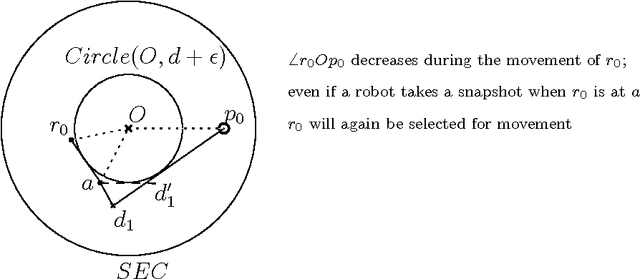
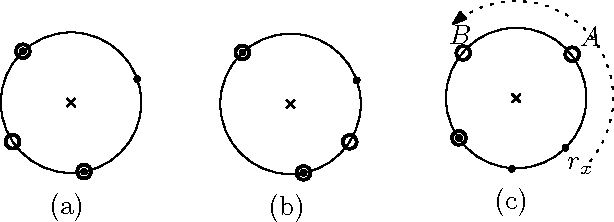
Abstract:This paper presents a deterministic algorithm for forming a given asymmetric pattern in finite time by a set of autonomous, homogeneous, oblivious mobile robots under the CORDA model. The robots are represented as points on the 2D plane. There is no explicit communication between the robots. The robots coordinate among themselves by observing the positions of the other robots on the plane. Initially all the robots are assumed to be stationary. The robots have local coordinate systems defined by Sense of Direction (SoD), orientation or chirality and scale. Initially the robots are in asymmetric configuration. We show that these robots can form any given asymmetric pattern in finite time.
 Add to Chrome
Add to Chrome Add to Firefox
Add to Firefox Add to Edge
Add to Edge